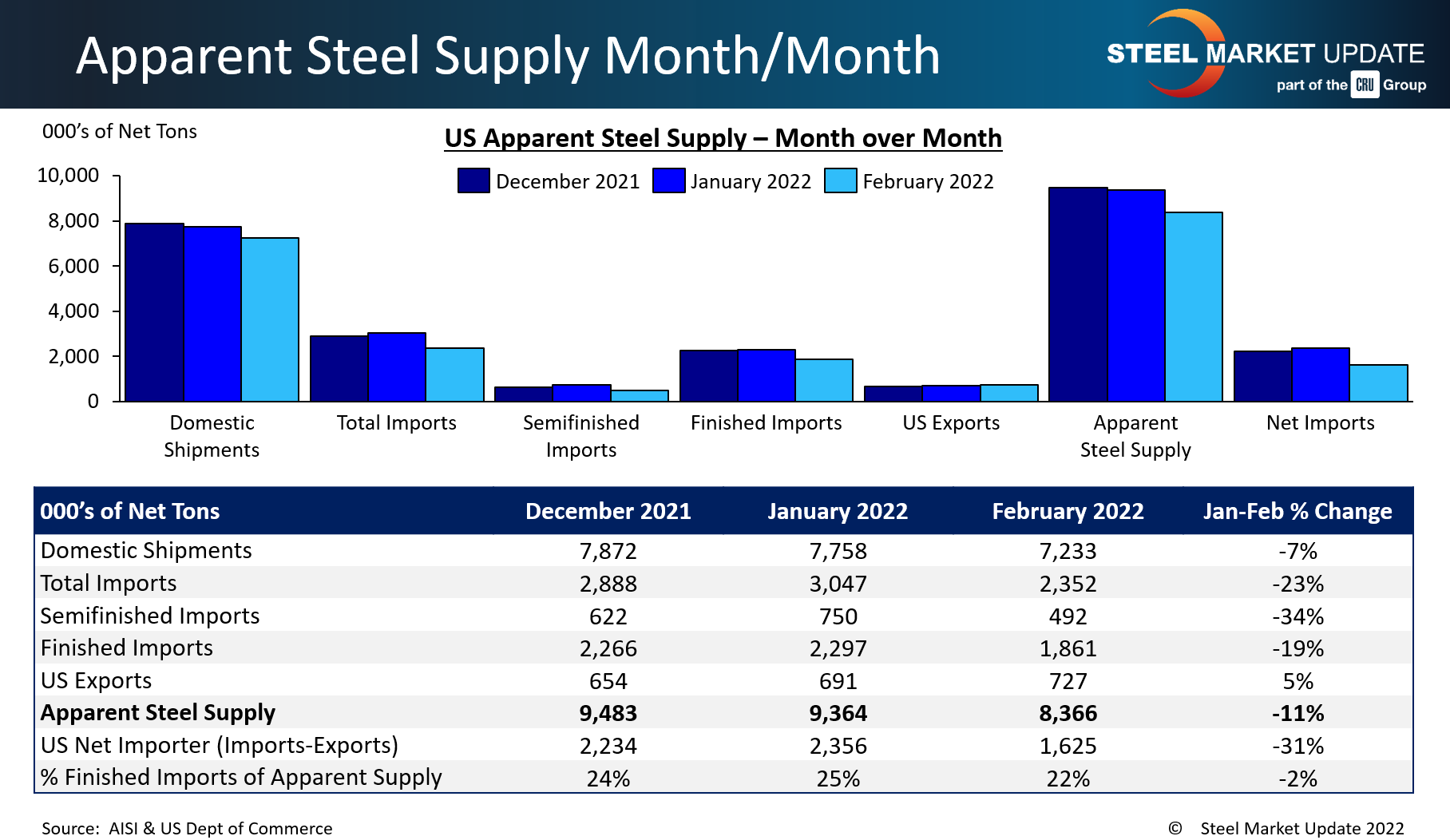Prices

April 12, 2022
Apparent Steel Supply Down 1 Million Tons in February to 8.4 Million
Written by Brett Linton
US apparent steel supply levels slipped 11% from January to February, down 997,000 net tons to 8.37 million tons, according to the latest US Department of Commerce and American Iron and Steel Institute (AISI) data. Recall that just last September, the market saw the highest monthly supply level in over six years (9.92 million tons). Supply has declined each month since then, with the February figure being the lowest seen in the past year.
Apparent steel supply, a proxy for demand, is determined by combining domestic steel mill shipments and finished US steel imports, then deducting total US steel exports.
Apparent supply for 2022 totaled 110.3 million tons, up 22% from 90.3 million tons in 2021, and up 1% from 109.5 million tons in 2019. In Steel Market Update’s 13-year data history, 2014 holds the annual record at 119.5 million tons.

February apparent supply is 856,000 tons higher than the same month one year ago, when supply was 7.51 million tons. This 11% improvement was primarily due to a 498,000-ton increase in domestic shipments and a 408,000-ton rise in finished steel imports, the sum of which was slightly reduced by a 49,000-ton increase in total exports. The net trade balance between US steel imports and exports was at a surplus of 1.63 million tons imported in February, 401,000 tons higher than one year prior. Finished steel imports accounted for 22% of apparent steel supply in February, up from 19% this time last year. The graphic below shows February trade statistics for each of the past three years.

Compared to the month prior when apparent supply was 9.36 million tons, February supply declined by 997,000 tons. This 11% decrease was primarily due to a 525,000-ton decline in domestic shipments and a 437,000-ton decrease in finished steel imports, plus a 36,000-ton increase in total exports. The net trade balance between imports and exports in February fell 31% from January, and the percentage of apparent steel supply composed of finished steel imports decreased 1%. The graphic below shows monthly statics over the last three months.

The figure below shows year-to-date monthly averages for each statistic over the last five years. The average monthly apparent supply level for January-February 2022 has improved compared to the same period in 2021, and is now back in line with the monthly averages of most previous years shown.

To see an interactive graphic of our Apparent Steel Supply history (example shown below), visit the Apparent Steel Supply page in the Analysis section of the SMU website. If you need any assistance logging into or navigating the website, contact us at info@SteelMarketUpdate.com.

By Brett Linton, Brett@SteelMarketUpdate.com







